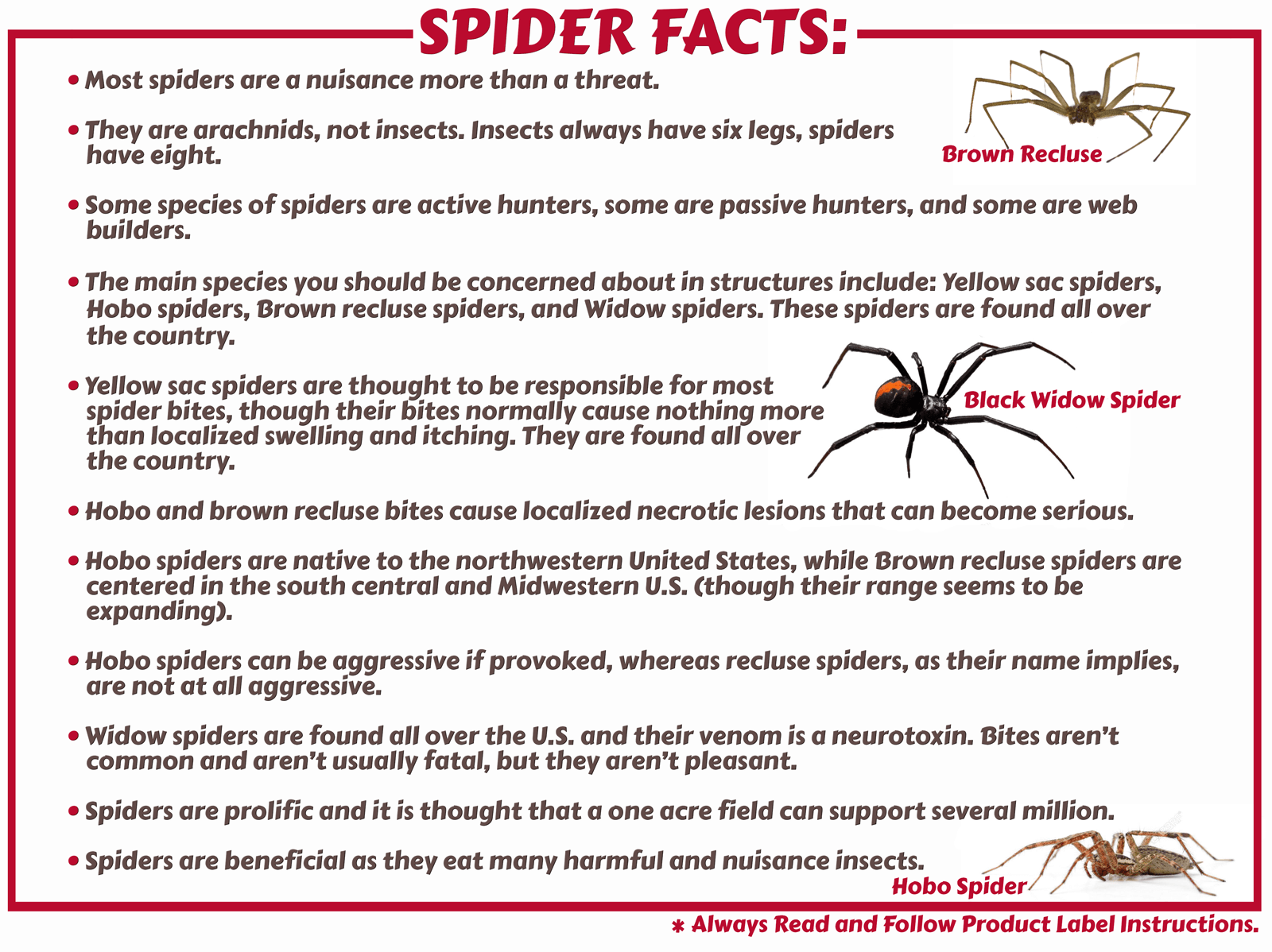Spiders

 Control Strategy
Control Strategy
Maggie’s Farm Home Bug Spray, Maggie’s Farm Yard Bug Spray, and Maggie’s Farm Wasp & Hornet Killer will kill spiders if they are sprayed directly (though it will take some time for them to die) and will also repel them. The Wasp & Hornet Killer jet spray can be used to reach spiders and their webs underneath eaves and other hard-to-reach areas outdoors. The Home Bug Spray or Yard Bug Spray can be used around the outdoor perimeter to kill spiders close to the foundation, and repel them from getting inside. For long lasting protection against spiders indoors, use Maggie’s Farm Spider & Insect Dust. Apply the dust to all possible entry points around the outside of your home, including weep holes in brick and siding (this will help keep insects out as well). Also apply to hiding places inside your home, including attics, basements, utility closets, behind and along baseboards, underneath and behind appliances, inside wall voids, in drawer wells (space under the bottom drawer of cupboards), under cabinets, sinks, and tubs, and in other cracks and crevices where spiders have been seen. Maggie’s Farm Bed Bug Killer dust can also be applied in these indoor hiding areas and will provide long-lasting protection against spiders and insects as well.
Vacuuming is also a great way to get rid of spiders, webs, and eggs indoors. Removal of clutter in storage areas, basements, sheds, etc., as well as outdoors, is critical to reduce nesting opportunities for widow and recluse spiders. You can easily find pictures of spiders online to help you identify them.
Maggie’s Farm Bed Bug Killer is extremely effective against indoor spiders including recluse spiders, but it needs to be applied very thoroughly in attics and all other hiding places. Brown recluse females may stay in one small area for a very long time, so every hiding place needs to be treated to get them all.
If your home is infested with recluse, widow, or hobo spiders, calling a professional may be your best bet.
Spider Facts:
- Most spiders are a nuisance more than a threat.
- They are arachnids, not insects. Insects always have six legs, spiders have eight.
- Some species of spiders are active hunters, some are passive hunters, and some are web builders.
- The main species you should be concerned about in structures include: Yellow sac spiders, Hobo Spiders, Brown Recluse spiders, and Widow spiders. These spiders are found all over the country.
- Yellow sac spiders are thought to be responsible for most spider bites, though their bites normally cause nothing more than localized swelling and itching. They are found all over the country.
- Hobo and brown recluse bites cause localized necrotic lesions that can become serious.
- Hobo spiders are native to the northwestern United States, while Brown recluse spiders are centered in the south central and Midwestern U.S. (though their range seems to be expanding).
- Hobo spiders can be aggressive if provoked, whereas recluse spiders, as their name implies, are not at all aggressive.
- Widow spiders are found all over the U.S. and their venom is a neurotoxin. Bites aren’t common and are not usually fatal, but they aren’t pleasant.
- Spiders are prolific and it is through that a one acre field can support several million.
- Spiders are beneficial as they eat many harmful and nuisance insects.
Recommended Read: How to Get Rid of Spiders Naturally


